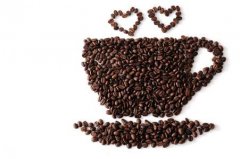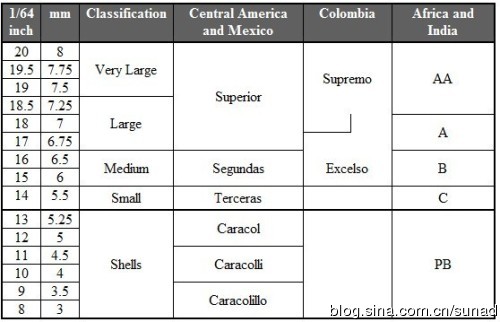The speed of water passing through coffee powder is the key to extraction.
Chaxiang Guide: hand flushing should be the favorite of all baristas. A hundred baristas can cook 101 flavors of the same bean, which shows how charming and exploratory it is! What Xiao Xu wants to explain in this article today is that the speed at which water passes through coffee powder is the key to extraction.
After doing hand flushing for such a long time, I don't think any method is wrong, and it has the theory and significance of this method, but I think that no matter what method it is, there is only one purpose and one principle. The purpose is to release a better taste of coffee, and the only principle is that water is extracted from coffee when it is passed through coffee powder. I have shared my own ideas with my students and friends. I think. No matter how to make coffee, there is a reaction between water and coffee. In the final analysis, if you want to study the principle of extraction, you should start with these two. Organize an article today to explain the so-called living water extraction in my brain.
In a sense, whether it is espresso or hand-brewed coffee, the water passes through the coffee powder, takes out the soluble matter in the coffee and falls into the cup. Then the taste must depend on the following points:
1. The speed at which water passes through coffee powder
two。 The temperature of water
3. What is the thickness and state of the powder?
4. Depth of baking degree
5. The length of baking time
First of all, according to the summary of the above points, give examples one by one.
In the same two coffee filters, if one is put in the sand and the other in the stone, we inject water at the same time and ask, which one will flow faster?
The second example: if we drink Pu'er tea, there are two ways, one is to put the tea in the cup to add water, like drinking green tea to drink Pu'er tea, the other is to use brewing method, the way of separation of tea and water. Ask: which flavor will you feel better?
With the questions in these two examples, let's analyze the principles and methods of coffee extraction.
The grinding is too fine, the baking time is too long, the baking is shallow, and the water temperature is low, which can be attributed to sand in general; on the contrary, rough grinding, short baking time, deep baking and high water temperature can be attributed to stone.
Perhaps everyone's understanding of this definition is still very vague. Hand-brewed coffee allows water to pass through coffee powder quickly and evenly from the beginning to the end. Unlike espresso, hand-brewed coffee is a pressure-free free-fall extraction. In this process, the speed of water passing through coffee powder is the key to extraction. We often say that there are more reasons for over-extraction and under-extraction.
Water is permeated and extracted through the gap between coffee granules. If it is ground too finely, it will produce a sand effect. The space through which the water permeates will be small, affecting the flow rate. The shorter the baking time, during the fresh cycle, or the deeper the coffee is roasted, the higher the content of carbon dioxide inside the coffee will be. during extraction, the coffee will release a large amount of carbon dioxide, which will isolate the gaps between the coffee granules and form a filter layer to allow water to pass through to produce extraction. Then the higher the water temperature, the higher the amount of carbon dioxide produced and released, which increases the speed at which the water passes through, while the speed at which it passes through is relatively slow.
So let's talk about another question: what is the main problem of over-extraction or under-extraction?
First of all: the phenomenon of excessive extraction will show that the coffee is too bitter, which is caused by soaking the coffee powder in water for too long. This is easy to explain. For example, the way we drink Pu'er tea now is to separate the tea from the tea, filter the tea after brewing the tea, and drink the tea soup; if we soak Pu'er for a long time, it will be too bitter and astringent. It's because the concentration is too high.
The same is true of coffee. In the process of coffee extraction, the most ingredients we can soak or extract are only 30%, and the remaining 70% are not analyzed, so in these 30% soluble substances, we only need about 12% of the ingredients. More than 12% of the ingredients can be counted as over-extraction, which we do not need. It will cause excessive bitterness or superfluous odor, similar to the smell of dirt and leaves. On the contrary, the lack of extraction is due to the fact that the water penetrates the coffee powder too fast and the precipitate is less, resulting in a light and sour taste of the coffee.
So, to sum up: our so-called technique is not to adjust the flavor, because the flavor is determined by the coffee bean producing area, treatment method and baking method, the technique is to adjust the speed and proportion of water passing through the coffee powder, so as to adjust the amount of flavor release.
Public platform: mrshowcafe authorized release
Important Notice :
前街咖啡 FrontStreet Coffee has moved to new addredd:
FrontStreet Coffee Address: 315,Donghua East Road,GuangZhou
Tel:020 38364473
- Prev

How to choose the appropriate coffee grinding degree according to different coffee utensils
The influence of coffee grinding degree on coffee: 1, coffee grinding should be average: make coffee more delicious 2, choice of coffee grinder: don't let heat take away coffee fragrance 3, coffee grinding trick: do not produce coffee fine powder, choose the appropriate grinding degree of coffee utensils: here I would like to remind you that the finer the grinding degree is, the stronger the bitter taste is, and the thicker the ground beans are, the weaker the bitter taste is, which is in the process of coffee extraction.
- Next

10 factors to pay attention to when choosing raw coffee beans
The raw bean seller is mainly responsible for grading the coffee beans before selling them to the coffee bean merchant. After the grading is completed, premium coffee beans and boutique coffee beans will be selected, although they will have some defects but do not affect the coffee rating. These defects are not so serious, but they can also cause potential damage to the quality of coffee. Although Cupping is undoubtedly the most definite way to check coffee beans.
Related
- What is the meaning of lactic acid fermentation with coffee bean treatment?
- How to judge the state of foam by sound?
- How does the latte pull out the unicorn pattern? Come to get for a little trick to improve the flower pull!
- Will flower pulling affect the taste of the latte?
- Do you know the history of coffee?
- The difference between honey treatment and sun washing what is raisin honey treatment?
- What kind of milk can a novice use to make coffee foam to keep the foam longer? The correct method and skills of milking tutorial sharing
- Why do washed coffee beans taste sour? Flavor characteristics of washed Coffee
- Introduction to the skill of how to practice the size and height of water injection around the circle of hand-brewed coffee
- How do beginners practice coffee flower drawing from scratch?

